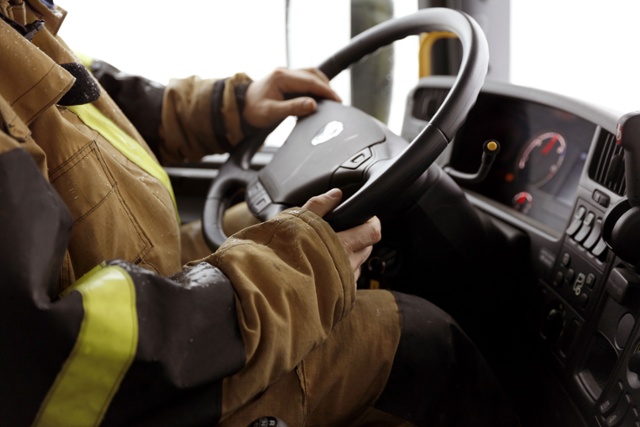It’s the time of year that we all begin to think about silent nights, sleigh bells ringing, and the joy of spending time with loved ones by the fire. It’s the time of year when the everyday heroes go to work so that we can enjoy the comfort and kinship of the holidays.
: Rescue Driving (3)
×Rescue Driving; How to be Efficient in Winter
Lucas Gulino, August 23, 2018
In your profession, driving a vehicle is not just a mode of transportation, it’s one of the tools that allows you to save lives. As such, your vehicle must be equipped with the best equipment to get the job done.
The most widely used response time standard in the United States is the National Fire Protection Association’s NFPA 1710 which requires “the arrival of an ALS (Advanced Life Support) company within an eight-minute response time to 90% of incidents.” This standard resulted from a 1970s cardiac arrest survival study by two Seattle physicians.
It is always a great feeling when we hear true stories from our customers especially when lives are saved. The following story was related to us recently about an incident witnessed by then-Assistant Chief Raymond Urich, Jr. of the Fisherville Volunteer Fire Company #1 in Halifax, PA. Fisherville is a community located in a mountainous area of Pennsylvania about 35 miles north of Harrisburg PA.
Why response time must be reduced
For rescue operations ‘response time’ is one of the measures for effectiveness. In emergency situations response time should be as short as possible as this could be crucial for saving lives or properties at danger. Accordingly, much effort is put into reducing response times. But actually, what is response time?
Some products are so functional and effective that there is little potential to improve them. The violin, for example, was designed by the Italian master violin-makers in the 17th century. Countless efforts have been made to challenge its basic construction in order to improve it, but in vain. The violin is so close to perfect that no one has come up with a fundamental improvement during the last 350 years.
What is black ice and how do I discover it?
Boel Haglund, November 16, 2016
Black ice on the road is rightly considered very dangerous when driving. Still, many drivers are not watchful enough in weather conditions where there is the risk of black ice. But, what is this black ice – and what should I know about it?
No, it’s not black
Typically, black ice is invisible. It’s a thin coating of glaze ice on the road surface. Since it’s thin and transparent, the black road surface is clearly seen through it, and that is why it’s called blackice.
But, it’s dangerous
The typically low levels of noticeable ice pellets, snow, or sleet surrounding black ice means that areas of the ice are often practically invisible to drivers. Accordingly, the driver is not prepared of the slippery road area, and there is a risk of unexpected loss of traction. This in turn may result in subsequent accident.
Black ice sometimes forms from super-cooled rain which freezes into ice and constitutes a particular risk to winter traffic because it is extremely slippery and hard to spot. The temperature may be above freezing but the road surface may still be slippery.
The road surface can be well below freezing temperature – while the vehicle thermometer suggests it is not freezing.
This is how you discover black ice
How to shorten your response time in rescue driving
Ulrik Andersson, September 1, 2016
Why response time must be reduced
For rescue operations ‘response time’ is one of the measures for effectiveness. In emergency situations response time should be as short as possible as this could be crucial for saving lives or properties at danger. Accordingly, much effort is put into reducing response times. But actually, what is response time?
Response time is a sum of parts
The total response time could be split into three clearly different phases:
- Dispatch time – This is the time elapsed from when an emergency call is received at the central until the rescue unit is notified.
- Turnout time – The time from when the rescue unit is notified until it is responding.
- Travel time – The time from responding until arriving at the incident scene.
It’s quite obvious that the potential for reducing response time will differ considerably depending on what phase we’re looking at.




.jpg)



